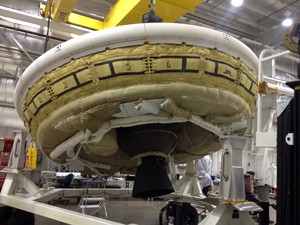
The skies off the Hawaiian island of Kauai will be a stand-in for Mars as NASA prepares to launch a saucer-shaped vehicle in an experimental flight designed to land heavy loads on the red planet.For decades, robotic landers and rovers have hitched a ride to Earth’s planetary neighbor using the same parachute design. But NASA needs a bigger and stronger parachute if it wants to send astronauts there.
Weather permitting, the space agency will conduct a test flight Tuesday high in Earth’s atmosphere that’s supposed to simulate the thin Martian air. Cameras rigged aboard the vehicle will capture the action as it accelerates to four times the speed of sound and falls back to Earth. Viewers with an Internet connection can follow along live.Engineers cautioned that they may not succeed on the first try.”As long as I get data, I’ll be very happy,” said project manager Mark Adler of the NASA Jet Propulsion Laboratory.
As it descends to Earth, a tube around the vehicle should inflate, slowing it down. Then the parachute should pop out, guiding the vehicle to a gentle splashdown in the Pacific.The latest test program “is advancing capabilities and creating the engineering knowledge needed for the next generation of Mars landers,” Braun, who served as NASA’s technology chief, said in an email.

NASA plans more test flights next year before deciding whether to use the new parachute on a future Mars mission.
The Tech Portal is published by Blue Box Media Private Limited. Our investors have no influence over our reporting. Read our full Ownership and Funding Disclosure →






